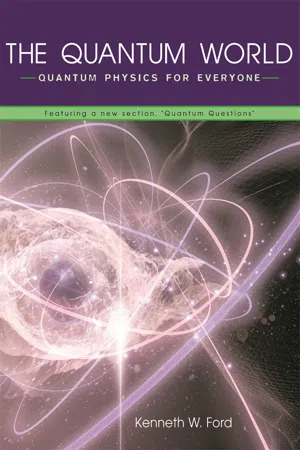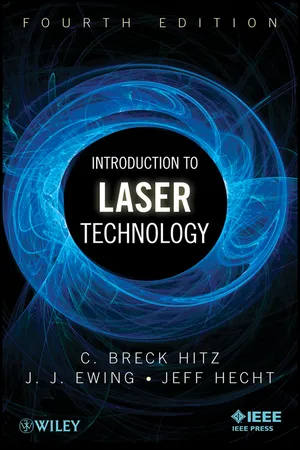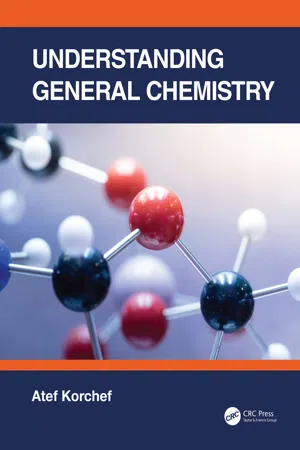Double-Slit Experiment with Electrons
The double-slit experiment with electrons is a fundamental demonstration of the wave-particle duality of quantum mechanics. In this experiment, electrons are fired at a barrier with two slits, resulting in an interference pattern on the detection screen, indicating their wave-like behavior. This experiment provides evidence that particles such as electrons can exhibit both wave-like and particle-like properties.
6 Key excerpts on "Double-Slit Experiment with Electrons"
- eBook - ePub
The Quantum World
Quantum Physics for Everyone
- Kenneth W. Ford(Author)
- 2005(Publication Date)
- Harvard University Press(Publisher)
...First, it has been performed with electrons instead of light; the observed fringe pattern has provided a wavelength measurement of electrons that validates the de Broglie equation (as the crystal-scattering experiments also did). Second, it has been performed with a source of light so weak that only one photon at a time is in the apparatus, and with equipment that includes—instead of a detecting screen—an array of tiny detectors that can signal the arrival of single photons. This one-particle-at-a-time double-slit experiment, simulated in Figure 36, is one of the simplest yet most revealing demonstrations of all that is strange about quantum physics. Bohr and Einstein debated it in the 1930s, when it was still only theoretical. Later, with improvements in electronics and detectors, it was achieved in practice, and it continues to astonish scientists as well as nonscientists. Figure 35. The double-slit experiment. Here’s what happens. Photon 1 is fired at the pair of slits. It is detected at a single point somewhere on the detector array. The point where it lands can’t be predicted. Then photon 2, as nearly identical as possible to photon 1, is fired at the pair of slits. It, too, lands at some unpredictable point on the detector array. And so it continues, one photon after another. After ten photons have hit spots on the detector array, the pattern appears to be random. After a hundred photons have arrived, a pattern begins to emerge. Most of the photons are arriving at points where wave theory predicts constructive interference (most of these land in the “shadow” of the opaque screen). Fewer photons are arriving where wave theory predicts partial destructive interference. No photons reach points where wave theory predicts complete destructive interference...
- eBook - ePub
- C. Breck Hitz, James J. Ewing, Jeff Hecht(Authors)
- 2012(Publication Date)
- Wiley-IEEE Press(Publisher)
...Here, two slits correspond to the sources, and dark stripes on a viewing screen correspond to motionless water at points X and Y. This arrangement, called Young’s double-slit experiment, is analyzed in detail in Chapter 5. But here is the point for now: the only way to explain the observed results is to postulate that light is behaving as a wave. There is no possible way to explain the bright spot at the center of the screen if you assume that the light is made up of particles. However, it is easily explained if you assume light is a wave. Figure 2.7 Optical analogy to wave experiment in Figure 2.6. During most of the nineteenth century, physicists devised experiments like this one and explained their results quite successfully from the assumption that light is a wave. But near the turn of the century, a problem developed in explaining the photoelectric effect. A photoelectric cell, shown schematically in Figure 2.8, consists of two electrodes in an evacuated tube. When light strikes the cathode, the energy in the light can liberate electrons from the cathode, and these electrons can be collected at the anode. The resulting current is measured with an ammeter (A). It is a simple experiment to measure the current collected as a function of the voltage applied to the electrodes, and the data look like the plot in Figure 2.9. Figure 2.8 A photoelectric cell. Figure 2.9 Current versus voltage for a photoelectric cell. There is a lot of information in Figure 2.9. The fact that current does not change with positive voltage (voltage that accelerates the electrons toward the anode) implies that every electron emitted from the cathode has at least some kinetic energy. In other words, an electron emitted from the cathode does not need any help to get to the anode. But as soon as the voltage starts to go negative, the current decreases...
- eBook - ePub
- Karl Popper(Author)
- 2005(Publication Date)
- Routledge(Publisher)
...APPENDIX v Examination of an Objection. The Two-Slit Experiment (cf. section 76) *1 The imaginary experiment described below under (a) is intended to refute my assertion that arbitrarily exact simultaneous (non-predictive) measurements of the position and momentum of a particle are compatible with the quantum theory. (a) Let A be a radiating atom, and let light from it fall on a screen S after passing through two slits, Sl 1 and Sl 2. According to Heisenberg we can in this case measure exactly either the position of A or the momentum of the radiation (but not both). If we measure the position exactly (an operation that ‘blurs’ or ‘smears’ the momentum) then we can assume that light is emitted from A in spherical waves. But if we measure the momentum exactly, for example by measuring the recoils due to the emission of photons (thereby ‘blurring’ or ‘smearing’ the position), then we are able to calculate the exact direction and the momentum of the emitted photons. In this case we shall have to regard the radiation as corpuscular (‘needle-radiation’). Thus to the two measuring operations there correspond two different kinds of radiation, so that we obtain two different experimental results. For if we measure the position exactly we obtain an interference-pattern on the screen: a point-like source of light—and one whose position can be exactly measured is point-like—emits coherent light. If on the other hand we measure the momentum exactly, we get no interference pattern...
- eBook - ePub
In Search of Divine Reality
Science as a Source of Inspiration
- Lothar Schäfer(Author)
- 1997(Publication Date)
- University of Arkansas Press(Publisher)
...Waves are delocalized, can interfere, superpose, interpenetrate, diffract, and some types can propagate in empty space. Particles are localized, inevitably massy, and subject to gravity and inertia. They can push, collide with each other, bounce around, and they never interpenetrate. In view of these differences, we would not expect a single entity to have properties of both particles and of waves. Nevertheless, at the turn of the twentieth century, light—electromagnetic radiation—was found to display the characteristics of waves in some experiments and of particles in others. Similarly, elementary particles—lumps of matter like electrons, protons, neutrons—were found to behave like waves in some experiments and like particles in others. The conceptual consequences of this discovery are so enormous that it can be ranked as one of the most important findings in the entire cultural history. Light shows the signature of waves in interference and diffraction experiments. The laws of optics, which correctly determine the performance of optical instruments, are based on the wave nature of light. But in addition, light can also show the signature of particles in collision experiments, when individual light particles (called photons) collide with individual electrons, and in doing so obey the laws of mechanics and gravity. In experiments conducted by A. H. Compton in 1923, x-rays—a form of electromagnetic waves like lightwaves—were scattered by various materials, such as graphite. When x-rays pass through a piece of graphite, they get pushed around by the electrons in this material and are scattered; that is, the direction of propagation is changed. Depending on the change of direction, their wavelength is also changed. In studying this phenomenon, Compton found that he had to use two principles— the conservation of energy and momentum —in order to explain the experimental results...
- eBook - ePub
- Dennis H. Goldstein(Author)
- 2017(Publication Date)
- CRC Press(Publisher)
...Around the year 1800, Thomas Young performed a simple, but remarkable, optical experiment known as the two-pinhole interference experiment. He showed that this experiment could be understood in terms of waves; the experiment gave the first clear-cut support for the wave theory of light. In order to understand the pattern that he observed, he adopted the ideas developed in mechanics and applied them to optics, an extremely novel and radical approach. Until the advent of Young’s work, very little progress had been made in optics since the researches of Newton (the corpuscular theory of light) and Huygens (the wave theory of light). The simple fact was that by the year 1800, aside from Snell’s Law of Refraction and the few things learned about polarization, there was no theoretical basis on which to proceed. Young’s work provided the first critical step in the development and acceptance of the wave theory of light. The experiment carried out by Young is shown in Figure 3.3. A source of light, σ, is placed behind two pinholes s 1 and s 2, equidistant from σ. The pinholes then act as secondary monochro-matic sources that are in phase, and the light waves from them are superposed on the screen Σ, and observed at an arbitrary point P. Remarkably, one does not see a uniform distribution of light on the screen. Instead, a distinct pattern consisting of bright bands alternating with dark bands is observed. In order to explain this behavior, Young assumed that each of the pinholes, s 1 and s 2, emitted waves of the form u 1 = u 01 sin (ω t − k l 1), (3.60) u 2 = u 02 sin (ω t − k l 2), (3.61) where pinholes s 1 and s 2 are in the source plane A, and are distances l 1 and l 2 from a point P (x, y) in the plane of observation Σ. The pattern is observed on the plane Oxy normal to the perpendicular bisector of s 1 s 2 where the x axis is parallel to s 1 s 2...
- eBook - ePub
- Atef Korchef(Author)
- 2022(Publication Date)
- CRC Press(Publisher)
...6 Introduction to Quantum Theory DOI: 10.1201/9781003257059-6 6.1 Objectives At the end of this chapter, the student will be able to: Recognize the wave particle duality of light and the wave particle duality of matter; Explain the atomic line spectrum of a hydrogen atom; Explain the photoelectric effect; and Define the different rules for electronic configurations and write the electronic configuration of any atom. 6.2 Electromagnetic Radiation – Light Electromagnetic radiation is a form of energy that is propagated through space and takes many forms, such as radio waves, microwaves, infrared, ultraviolet, light and X-rays. Each electromagnetic radiation can be characterized by its wavelength and/or frequency. The wavelength (λ) is the distance from one crest to the next in the wave (Figure 6.1). It is measured in units of distance. The frequency (ν) is the number of complete cycles per second, expressed in s −1 or Hz. The frequency ν of a wave is inversely proportional to its wavelength, λ: FIGURE 6.1 The wavelength λ ν = C λ where the speed of light, C, is the same for all electromagnetic radiation (C = 3 × 10 8 m s −1 in a vacuum). Practice 6.1 The yellow light given off by a sodium lamp has λ = 589 nm. What is the frequency of this radiation? Answer: C = 3.00 × 10 8 m s −1 and λ = 589 nm = 589 × 10 −9 m for the yellow light from a sodium lamp. The frequency of the yellow light is ν = C/λ = 3.00 × 10 8 /589 × 10 −9 = 5.09 × 10 14 s −1 = 5.09 × 10 14 Hz 6.3 Wave-Particle Duality of Light Planck proposed in 1900 that atoms can gain or lose only certain quantities of energy by absorbing or emitting radiation: Δ E a t o m = n h ν where n is a positive integer (n = 1, 2, 3, etc.) and h is Planck’s constant (h = 6.62 × 10 −34 J s). This means that energy is quantized. Einstein in 1905 proposed the wave-particle duality of light, which means that light consists of particle-like packets of energy called photons, also have wave-like properties...





